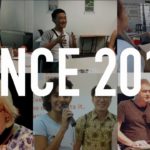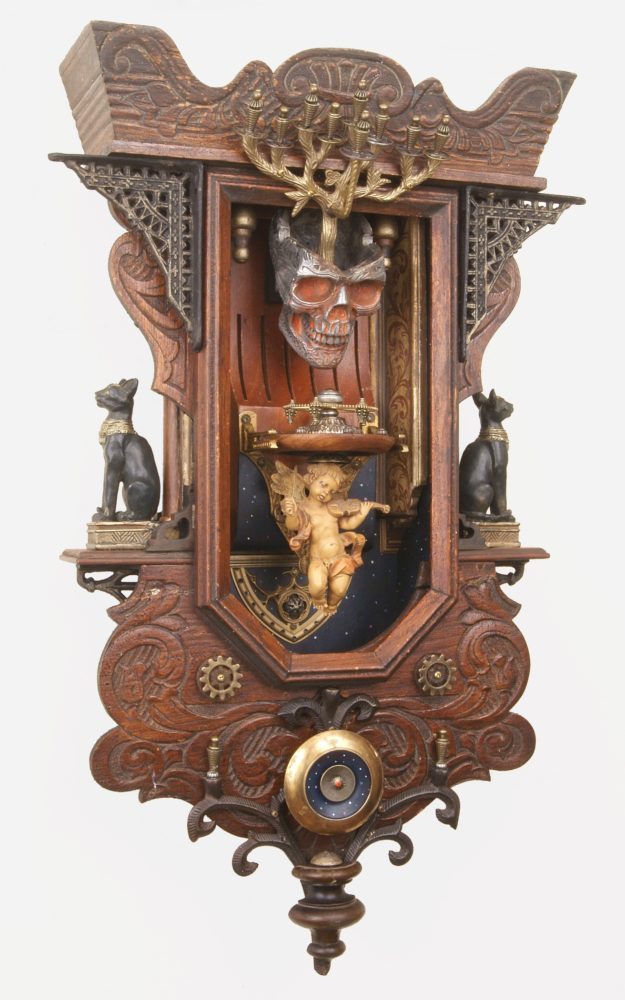Iris Tingitana Oxalis
2007 - Photography (Photography)
125 x 125 cm
Yto Barrada
This photograph is part of the series titled “Iris Tingitana project” (2007) focusing on the disappearance of the iris. If Yto Barrada was initially interested in the architectural heritage of the city, today the core of her research focuses on risks around landscape and its heritage. The iris, found bordering the city, carries the name of the city, and is an emblem of Tangier. This flower grows in the most improbable and resistant situations such as vacant land and construction sites. Now on roadsides, next to iris flowers grow geraniums, like in standardized European resorts. This photograph depicts a child proudly sporting a crown made of iris flowers in a deprived area. In traditional iconography, and especially in Catholic traditions, the iris, like the lily, is a royal symbol. This child reminds us of portraits from seventeenth century Dutch painting, in which flowers symbolize vanity. Despite the intense and interrogative look of the boy, one cannot help but think of the boy in a symbolized garden of Eden – a paradise lost.
Yto Barrada is an artist of Morrocan origin who has worked for many years in Tangier, a urbanized border town influenced by the West. Her work is articulated around Tangier’s territory and raises questions on the city’s rapid infrastructural changes associated with economical development and real-estate speculation. Tangier, in a sense, is at the point of becoming a Moroccan Costa del Sol. “Le project du détroit,” a work that has granted her international visibility, consists of videos and series of photographs, in attempt to describe a city of transit and in transition. For a considerable amount of time, Tangier was the gate to Europe that Schengen closed in 1991. A meeting point between Europe and Africa, the strait of Gibraltar became a “larger Morrocan cemetary” that refugees and asylum seekers used to cross from Tangier. Her work reminds one of documentary reporting, yet with a poetic vision, far from exoticism and spectacle. In her work, the city’s inhabitants, or their traces, find themselves at the heart of her images. Yto Barrada was born in Tangier in 1971. She lives and works between Tangier and Paris.
Colors:
Related works of genres: » french contemporary artists, » moroccan contemporary artists
» see more

© » KADIST
Benoît Maire
The series Clouds paintings by Benoît Maire features oil on canvas works in varying format, in which the artist depicts clouds, using a variety of tools, including a spray gun, paintbrush, or palette knife...

© » KADIST
Saâdane Afif
2005In this work, Saâdane Afif quotes André Cadere’s round wooden batons using the copy share and remix principles...

© » KADIST
Benoît Maire
2006The piece consists of sculpture of 10 elements, among them: a globe, a picture of a gorilla, a chair, scrabble letters, 3 glasses of black ink, a book whose title is illuminated by the beam of a 8mm projector, a pair of boots, etc...

© » KADIST
Michel Auder
1981Talking Head is a short film in black and white of Auder’s daughter Alexandra, hidden behind a hemp plant, playing with a plastic wrapper and babbling in an imaginative way...
Related works featuring themes of: » City Scenes, » Color Photography, » Conflict, » Documentary Photography, » French-Moroccan
» see more

© » KADIST
Walead Beshty
2012Constructed out of metal or glass to mirror the size of FedEx shipping boxes, and to fit securely inside, Walead Beshty’s FedEx works are then shipped, accruing cracks, chips, scrapes, and bruises along the way to their destination...

© » KADIST
Walead Beshty
2011Constructed out of metal or glass to mirror the size of FedEx shipping boxes, and to fit securely inside, Walead Beshty’s FedEx works are then shipped, accruing cracks, chips, scrapes, and bruises along the way to their destination...

© » KADIST
Bani Abidi
2008The threshold in contemporary Pakistan between the security of private life and the increasingly violent and unpredictable public sphere is represented in Abidi’s 2009 series Karachi ...

© » KADIST
Shilpa Gupta
2014These hand drawn maps are part of an ongoing series begun in 2008 in which Gupta asks ordinary people to sketch outlines of their home countries by memory...
Other related works, blended automatically
» see more

© » KADIST
Yto Barrada
2004In this photographic series, Yto Barrada was interested in the logos of the buses that travel between North Africa and Europe...

© » KADIST
Walead Beshty
2012Constructed out of metal or glass to mirror the size of FedEx shipping boxes, and to fit securely inside, Walead Beshty’s FedEx works are then shipped, accruing cracks, chips, scrapes, and bruises along the way to their destination...

© » KADIST
Walead Beshty
2011Constructed out of metal or glass to mirror the size of FedEx shipping boxes, and to fit securely inside, Walead Beshty’s FedEx works are then shipped, accruing cracks, chips, scrapes, and bruises along the way to their destination...
Related works sharing similar palette
» see more

© » ARTS EQUATOR
ArtsEquator Turns Two! | ArtsEquator Thinking and Talking about Arts and Culture in Southeast Asia ArtsEquator Viewpoints November 15, 2018 ArtsEquator is two years old today! 🎉 Aside from our original reviews, essays, podcasts and visual essays, we’ve also organised programmes to strengthen performance criticism and critical discourse...
Other works by: » Yto Barrada
» see more

© » KADIST
Yto Barrada
2004In this photographic series, Yto Barrada was interested in the logos of the buses that travel between North Africa and Europe...
Related artist(s) to: Yto Barrada » Okwui Enwezor, » Hou Hanru, » Udo Kittelmann, » Deutsche Bank, » Roman Ondák, » Wangechi Mutu, » Etel Adnan, » Imran Qureshi, » Meschac Gaba, » Victor Man
» see more

© » KADIST
Meschac Gaba
2010The headdresses, woven from artificial hair braids, symbolize historical icons including Martin Luther King, Kwame Nkrumah, Fela Kuti and King Guézo of Dahomey...

© » KADIST
Imran Qureshi
2017At first glance, This Day by Imran Qureshi appears to be an energetic, gestural painting reminiscent of Action Painting from the mid-20th century...

© » KADIST
Imran Qureshi
2011There was a tragedy in Sialkot, Punjab, in August 2010, when two adolescents were murdered by vigilantes who were apparently in connivance with the police...

© » KADIST
Etel Adnan
2010Adnan’s paintings are simple images with bold contrasting colors and rich textures...
Related works found in the same semantic group
» see more

© » LENS CULTURE
Gilded Lilies - Photographs by Tine Poppe | Interview by Sophie Wright | LensCulture Feature Gilded Lilies Norwegian photographer Tine Poppe’s portraits of cut flowers, shot against landscapes ravaged by climate change, propose a new take on the still life—one fit for the uncertain times we are living in...







